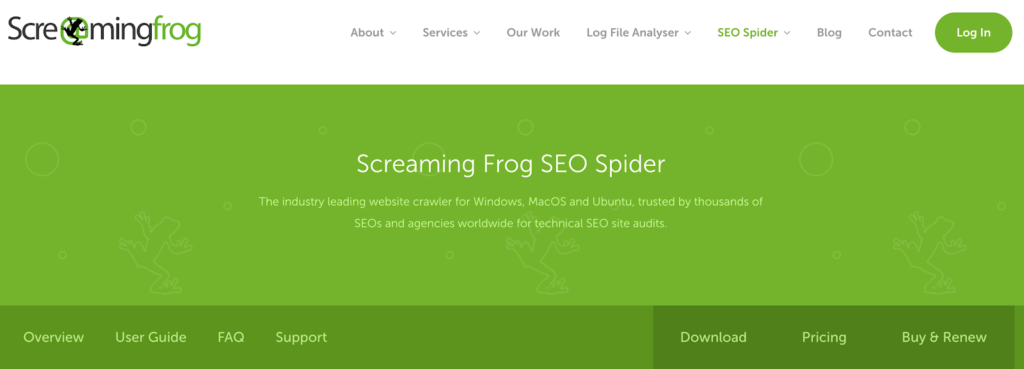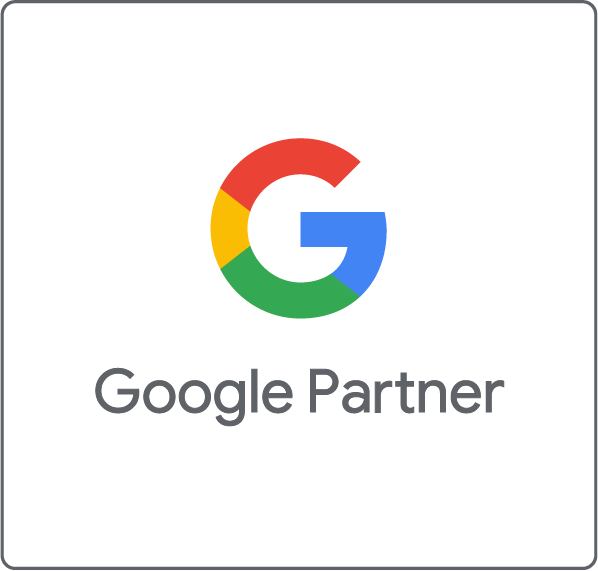SEO Audit

SEO has become one of the most essential components of digital marketing.
Recently, the marketing scheme for most businesses has shifted to a digital approach. As time goes on, digital marketing will overtake all over forms of marketing as the primary approach for all types of businesses and industries. Search Engine Optimization (SEO) in particular is one of the most important components in digital marketing. When a business properly executes SEO for their website, their Google search rankings will top all of its competitors. Being at the top of your industry’s Google search rankings will go a long way in attracting web traffic and potential customers over the competition.
So, how can you figure out whether your website tailors to SEO optimization? The answer is by conducting an SEO audit. By executing an SEO audit on your website, you can determine if your website fulfills the requirements of SEO. Although SEO can appear to be complex, it can be broken down into segments. The three main segments of SEO include Page Level factors, Website Content factors, and whether or not there is Duplicate Content.
What is an SEO audit? What are we looking for? And how does it help? Keep reading to find out.
What is an SEO audit?
Think of an SEO audit as a checkup for your website. An audit will check how well your website lines up with the best practices of SEO. Conducting an SEO audit is the first step towards creating a better website. Audits are done in an effort to identify foundation issues within user experience and to identify any problems that go unseen. The categories that an SEO audit will check for issues are the following:
- Technical SEO
- Website structure
- On-page SEO
- Potential off-site problems
- User experience
- Content gaps and opportunities
- Competitive marketplace insights
Components
Now, we dive deeper into the components and factors that we are looking at when we complete an SEO audit on your site:

Site crawl
A site crawl essentially checks for the general usability of your site. For sites that are larger, have more pages, and more links, this is perfect. Oftentimes it can be hard to check everything on-site in detail. While doing the crawl doesn’t fix any problems, it brings our attention to areas that we may need to take a closer look at, and implement appropriate changes.
By crawling your site, you can determine if any updates need to be made to your SEO strategy. Site crawling can help you determine whether your:
- Title tag has a keyword
- Title tag starts with the keyword
- Keyword is in the description tag
- Keyword is in the H1 tag
- Keyword is the most commonly used phrase on the page
By keeping these factors up-to-date, the SEO ranking of your business will maintain its position.
There are a variety of sources online that can crawl your site. One of them is Screamingfrog. Screamingfrog allows us to customize the crawl and search for exactly what we need. The site is relatively simple and produces quality results.
What we check

E.A.T
- Expertise Expertise essentially means that you must be an expert in the field of your website. You can show your expertise by crediting yourself with the work. Ensure that you appear confident in your work and that the information is backed up with facts. You can score highly if you write truthful valid and well-explained points on your site. This factor isn’t as important for gossip sites but is essential for medical, and legal websites.
- Authority What authority do you have on the topic? Do you have a writer who is a pro when it comes to a certain article, mention their authority in the writing or in the bio? If You have a community forum site, the quality of conversation will dictate the “authority”. Reviews can also impact the site authority.
- Trustworthiness Pretty much just what you think, how trustworthy is not only your content but your website. One of the first things that will have an impact on your score is whether or not you have an SSL certification. An SSL certification is just a way of showing that your site is secure. As you can imagine, trustworthiness is particularly important for e-commerce websites. Plus over 70% of the first page Google results have SSL certifications.
- How to check We check this the same way that a Google auditor would. We look through as a third party; what works what doesn’t, and what can be tweaked?
- Does your site have personalized author information so that you can be contacted?
- Is your site fact-checked?
- Does your website tackle necessary subjects and questions that give Google more of a motive to put your site at the top of the search results?
- Are your meta descriptions and title tags of high quality? (e.g. are designated keyword and phrases implemented that relate to the topics of your article)

Headlines
Are your headlines:
- Compelling?
- Natural?
- Conversational?
- Facilitating conversation?
Headlines are a difficult balance between technicalities and interesting and inviting names. You want to create mystery so people want to read, but you have to give readers enough of a hint that they know what they’re reading, without giving away the whole article. While ranking for many things is good to drive traffic, you might be driving the wrong audience. Focus on your main audience as much as possible.

SEO writing
- Structure Structuring your writing is done in two ways. The first is from a technical perspective. Use correct tags for your writing, h1,h2,h3 tags for headings, and p for paragraph text. From a reader perspective, the content should just flow naturally. Keep content relevant and orderly.
- Keyword Integration Sometimes people think in order to rank for their keywords, that they have to go crazy adding various versions of their keyword, instead, focus on the main words and phrases. A high-quality website doesn’t overload on keywords.
- Images Make sure your images are of quality. Where possible use professional photos. 23e2 offers professional photos for all websites, taking advantage of original and high-quality photos. Don’t plagiarize photos either, as nice as it is to have great pictures, they aren’t free.
- High-quality writing Quality writing has no word limit. Focus on explaining all your points to the fullest. You want to write content for your reader that is comprehensible, complete, interesting, and informative. Don’t limit yourself but at the same time, don’t go overboard explaining a simple topic.
- Bullet points Bullet points are nuggets of information. Break up your content so it is easier to follow. You aren’t writing a book, and readers aren’t looking for a book. Having bullet points in your writing allows readers to find the content they need easily. Your readers will be much happier with your site as a result. Don’t throw lists in just to have them there. They have to serve the purpose of enhancing the reading experience and not taking away from it.

Links
Linking externally and internally will prove prosperous for your website. Linking internally will maintain traffic flow and provide additional information. Linking to external sources may broaden your scope for other linking opportunities. Also depending on where you link to, it can increase your authority and trustworthiness.
To check if your website is linked to any custom URLs, you can use software such as ‘Screaming Frog’ for tracking. When using Screaming Frog, you can use a search feature in the program to find any URLs that contain “UTM”. UTM parameters are unique identifiers and indicate if a URL is unique. You can also track UTM pages by using Google Analytics.
Having links on your website can benefit its ranking. When adding links to your content, you should:
- Use both outbound and inbound link types
- Make sure that the links have quality and relate to your content
- Fix any broken links that your site may have
- Avoid using affiliate links (their URL can direct you to incorrect destinations)
By utilizing links properly, your website will shine in Google’s Search Rankings.
How to check:
- Go through content to see where or if you have linked
- Look at the quality of links
- Are there any missed opportunities?
- Using Screaming Frog, you can check for broken links.
- Once you have identified broken links by checking the HTML tab, you can delete any broken ones

Duplicate content
Is there content on your page that repeats itself? That duplication can be harming your search engine ranking. It can be really hard to come up with multiple different descriptions for similar products. Similarly, it can be a challenge to keep track of which words you have used. That’s why we do an audit.
Alternatively, duplicate content may be on different websites. Your content on website A might be too similar to the content on website B. Google will see this as plagiarism and needs to be corrected immediately.
How to check for duplicate content:
- Use Copyscape, an SEO standard that will check for any of the same content on your various website pages. The internal feature is available with a premium subscription.
- To check for plagiarized content, copy and paste a chunk of your text into Google. Look it up and see what matches.
Duplicate content goes beyond text content, URLs can also have duplicate content which can lead to issues for your website.
- To check if URLs can duplicate content, you should look at:
- How frequent content updates take place
- The severity of the content updates
- The historical trend of page updates
- Your URLs must be less than 115 characters in length and make sure that each URL direct users to certain page categories on your website (e.g. website.com/contact-us)
- You can check all of these by using ‘Screaming Frog’ and to keep track of the trends, you can use a Microsoft Excel spreadsheet

Keyword Cannibalism
- Conversion rate If there is an article that is doing much better than the other, why do you need two? You can take down the article doing worse, so all the time and energy can be redirected to the better performing one.
- Content quality Having more than one page with the same content risks content quality. Duplication is another risk that will harm the chance of getting referrals.
- Internal anchor text Having two pages target the same audience is bad for linking. If you combine the two into one or get rid of one entirely, you can concentrate your topic links to one page.
- External links You do not want to be sharing the number of external links. Having one page maximizes results and will overall produce more value.
How to check for keyword cannibalism:
On Screaming Frog, you can look for similarities between headlines and content. Similarities between articles can signal that you have a cannibalization issue.

User experience/engagement
While User engagement and user experience do not directly affect Google rankings, they can affect other website factors. By having a user-friendly website, it will tremendously improve your web traffic and user engagement on your site. This will drive more sales and it will create a boost in earnings. By adding a reasonable amount of interactive features such as live chat and demonstrative videos, you can increase the conversion rate of your website.
Did you know that 38% of users said they would stop visiting a website if it didn’t look nice? How can you then say that UX doesn’t matter? That didn’t convince you? Some websites have seen over a 180% increase in traffic and customers since updating web UX.
With that being said, it’s hard to track and monitor how users are feeling about your UX. Unlike keywords where you can put your finger on exactly what you did, Updating UX is a little more abstract.
How to check
- Checking UX in audit isn’t done with algorithms or off-site systems, we have a ton of experience when it comes to web design and would be more than happy to recommend changes in order to improve your website.

Abnormally high bounce rate on google
Bounceback rates refer to the number of users who visit your page but leave. These rates usually indicate how interested customers are on your website, services, or products. A bounceback rate of over 65% is cause for concern. It could mean you have a site speed problem or a lack of interest. Don’t worry though, that’s why we do an audit to see where we can help.
Once we have identified that there is an issue, we can check a few different numbers and statistics in order to rule out reasons.
User reviews
Another indirect factor that has an impact. User reviews may not be as concrete as keywords or backlinks, but having a steady stream of positive reviews is great for business. It means people are talking about your site!
Not all reviews are legit though. There are people out there who target businesses and leave negative reviews just because, or to try and kill reputation. An audit will be able to tell you more accurately which reviews are real and which aren’t. Additionally, this may take time, sometimes it can be hard to distinguish between real and fake reviews.
By monitoring the site reviews of your website, you can get a grasp of how effective your SEO strategy is. If you have many positive reviews, it indicates that your business has strong website content, user engagement, and user-friendly web design. This applies to review-based sites such as Yelp.

Site is not sharable
One of the first things we will do is to make sure that it is easy to share your page. On many mobile phones, there is a button on the browser allowing users to share. But we want to make sure that there is more than one way to share your site. The easier it is to share your page, the more that people will.
Results and next steps
So what can you expect from an audit? What are your next steps?
Once we complete the audit, we are able to recommend various solutions for you. These solutions are tailored specifically to your needs and aim to provide efficient solutions to your most prominent problems.
Your next steps will be to communicate with us, your biggest concerns, or any ideas you have.
If you think that your business could benefit from an SEO audit, contact us today to discuss the best action plan for your business.
© 23e2 Business Services Inc. | Working With 3rd Parties
© 23e2 Business Services Inc. | Working With 3rd Parties

